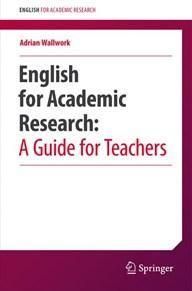Artificial Intelligent Approaches in Petroleum Geosciences, 2 Ed.
◆日本地質学会第132年学術大会セール 開催中!:2025年10月24日(金)ご注文分まで
※上記表示の販売価格は割引適用後の価格です 出版済み 3週間でお届けいたします。 Title: Artificial Intelligent Approaches in Petroleum Geosciences, 2 Ed. Author: Constantin Cranganu Publisher: Springer ISBN: 9783031527142 Cover: HARDCOVER Date: 2024年07月 DESCRIPTION This book presents cutting-edge approaches to solving practical problems faced by professionals in the petroleum industry and geosciences. With various state-of-the-art working examples from experienced academics, the book offers an exposure to the latest developments in intelligent methods for oil and gas research, exploration, and production. This second edition is updated with new chapters on machine learning approaches, data-driven modelling techniques, and neural networks. The book delves into machine learning approaches, including evolutionary algorithms, swarm intelligence, fuzzy logic, deep artificial neural networks, KNN, decision tree, random forest, XGBoost, and LightGBM. it also analyzes the strengths and weaknesses of each method and emphasizes essential parameters like robustness, accuracy, speed of convergence, computer time, overlearning, and normalization. Integration, data handling, risk management, and uncertainty management are all crucial issues in petroleum geosciences. The complexities of these problems require a multidisciplinary approach that fuses petroleum engineering, geology, geophysics, and geochemistry. Essentially, this book presents an approach for integrating various disciplines such as data fusion, risk reduction, and uncertainty management. Whether you are a professional or a student, you can greatly benefit from the latest advancements in intelligent methods applied to oil and gas research. This comprehensive and updated book presents cutting-edge approaches and real-world examples that can help you in solving the intricate challenges of the petroleum industry and geosciences. TABLE OF CONTENTS Preface to the 2nd edition.- Preface to the 1st Edition.- 1. Applications of Data-Driven Techniques in Reservoir Modeling and Management.- Part 1: Waterflooding.- Part 2: Water Alternating Gas Injection, CO2 Storage, and Property Estimations.- 2. Comparison of three machine learning approaches in determining Total Organic Carbon (TOC): A case study from Marcellus shale formation, New York state.- 3. Gated Recurrent Units for Lithofacies Classification based on Seismic Inversion.- 4. Application of Artificial Neural Networks in Geoscience and Petroleum Industry.- 5. On Support Vector Regression to Predict Poisson’s Ratio and Young’s Modulus of Reservoir Rock.- 6. Use of Active Learning Method to Determine the Presence and Estimate the Magnitude of Abnormally Pressured Fluid Zones: A Case Study from the Anadarko Basin, Oklahoma.- 7. Active Learning Method for Estimating Missing Logs in Hydrocarbon Reservoirs.- 8. Improving the Accuracy of Active Learning Method via Noise Injection for Estimating Hydraulic Flow Units: An Example from a Heterogeneous Carbonate Reservoir.- 9. Well Log Analysis by Global Optimization-based Interval Inversion Method.- 10. Permeability Estimation in Petroleum Reservoir by Meta-heuristics: An Overview.- Index. 最近チェックした商品

|
||||||||||||||||||||||||||||||||||||||||||||||||

























